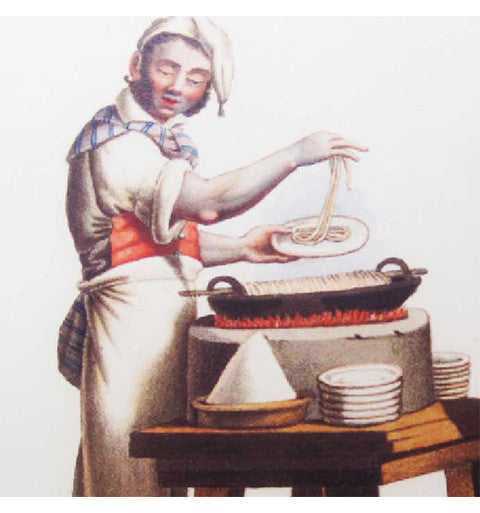Mar 12, 2016
Do you know where pasta began?

Our spotlight on pasta this week (see the links below) sent us sifting through mounds of pasta data through the ages. We tend to associate pasta and all its silky glories with Italy, but the Italians have others to thank for their iconic dish. Scholars generally agree that pasta spread from Persia to the rest of the world, but exactly when that happened isn’t clear.
Because pasta in its most basic form is a simple blend of flour and water, a humble recipe for noodles was nothing to write home about, perhaps, and ancient documents recording its history are difficult to find. However, we do know the following:
• The 5th century “Jerusalem Talmud” contains a debate about whether boiled dough could be considered unleavened bread. It’s unclear whether “dough” meant noodles (some say it referred to boiled flatbreads), but it does show that boiling was used as a cooking method for dough, even back then.
• In the 10th century, Persian literature mentions lakhshah (meaning “slippery”), strips of dough that probably were boiled.
• Muhammad al-Idrisi, an Arab geographer in the early 12th century, reports that people in Palermo, Sicily, were making strings of dough called “trii.” It’s possible that term comes from the Arabic “itriyah” or the Greek “itria.”
• In 1279, in Genoa, Italy, the possessions of a deceased man named Ponzio Bastone included a “bariscella piena de macaronis” (a basket full of macaroni). “The Oxford Companion to Food” asserts that this would indicate the pasta was a “durable item” and “professionally made, indicating in turn that macaroni was well established as food.”
• Italian author Giovanni Boccacio writes in “The Decameron” (a collection of short stories published around 1351) about a mythical land called Bengodi, where people roll macaroni down a mountain of grated cheese.
• Francesco di Marco, an Italian merchant, writes in the 14th century about ravioli stuffed with pounded pork, eggs, cheese, parsley and sugar.
• According to the Encyclopedia of Food and Culture, the oldest and most traditional way that Italians ate pasta was to top it with butter, cheese, sugar, cinnamon and other spices. A sauce of tomatoes didn’t come until much later, after the tomato was introduced to the Old World from the Americas.
• In 1898, Mark Carleton, an agronomist for the USDA, went to Russia in search of rust-resistant wheat and came back with durum wheat, the variety best suited for pasta making due to its high protein content. Today, most Italian pasta is made from American-grown wheat.
• In his 1932 “Futurist Cookbook,” Filippo Tommaso Marinetti, an Italian poet and founder of the Futurist movement, called for the abolition of “pastasciutta, an absurd Italian gastronomic religion.” He wrote that pasta “is completely hostile to the vivacious spirit and passionate, generous, intuitive soul of the Neapolitans.”
• According to the National Pasta Association, the Americans eat an average of 20 pounds of pasta every year. To put that number in context, according to a 2013 report, Americans on average eat about 23 pounds of cheese and 74 pounds of red meat per year.
Thanks to all those pioneers in the pasta world that paved the way for Cappello's.